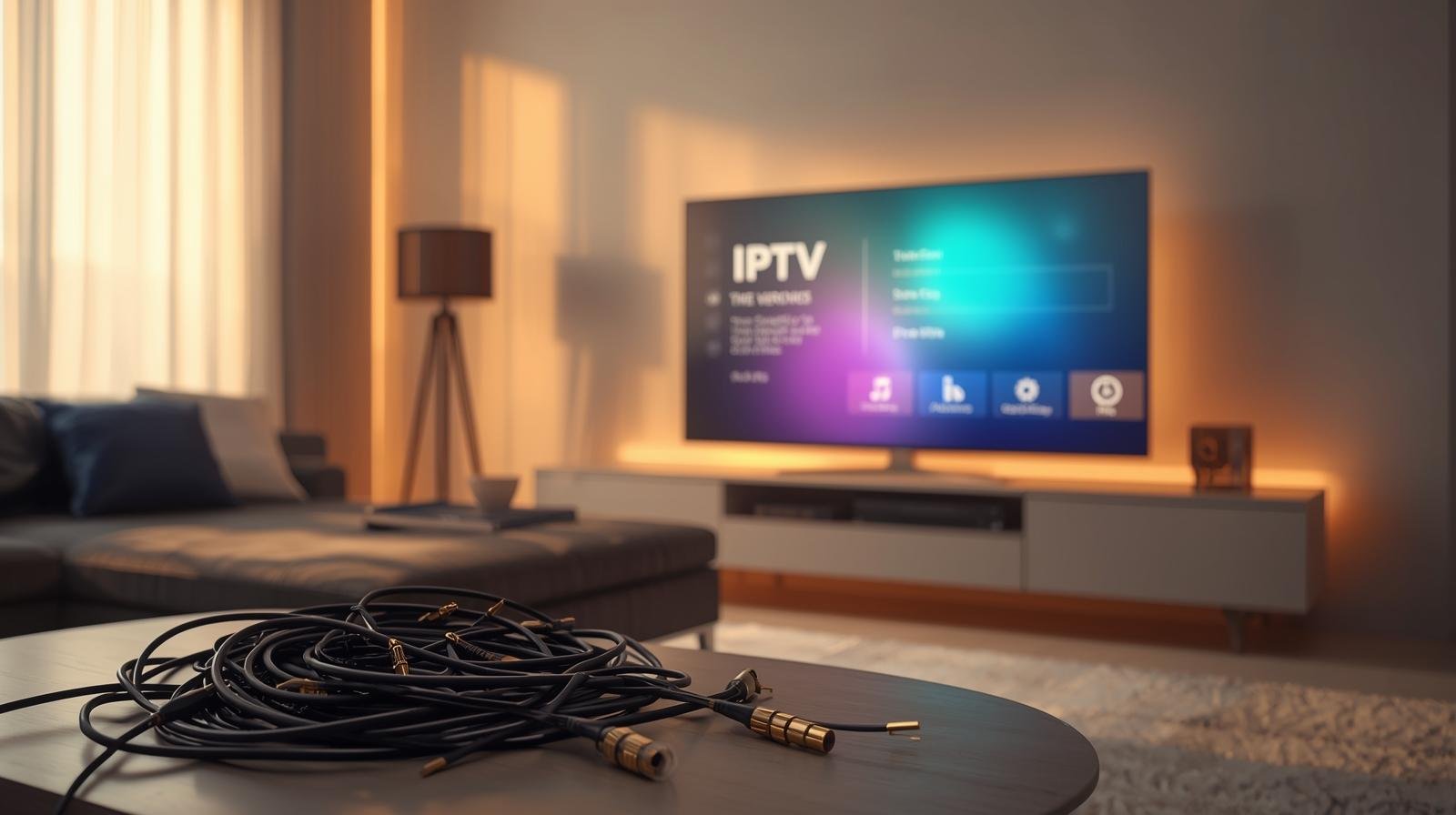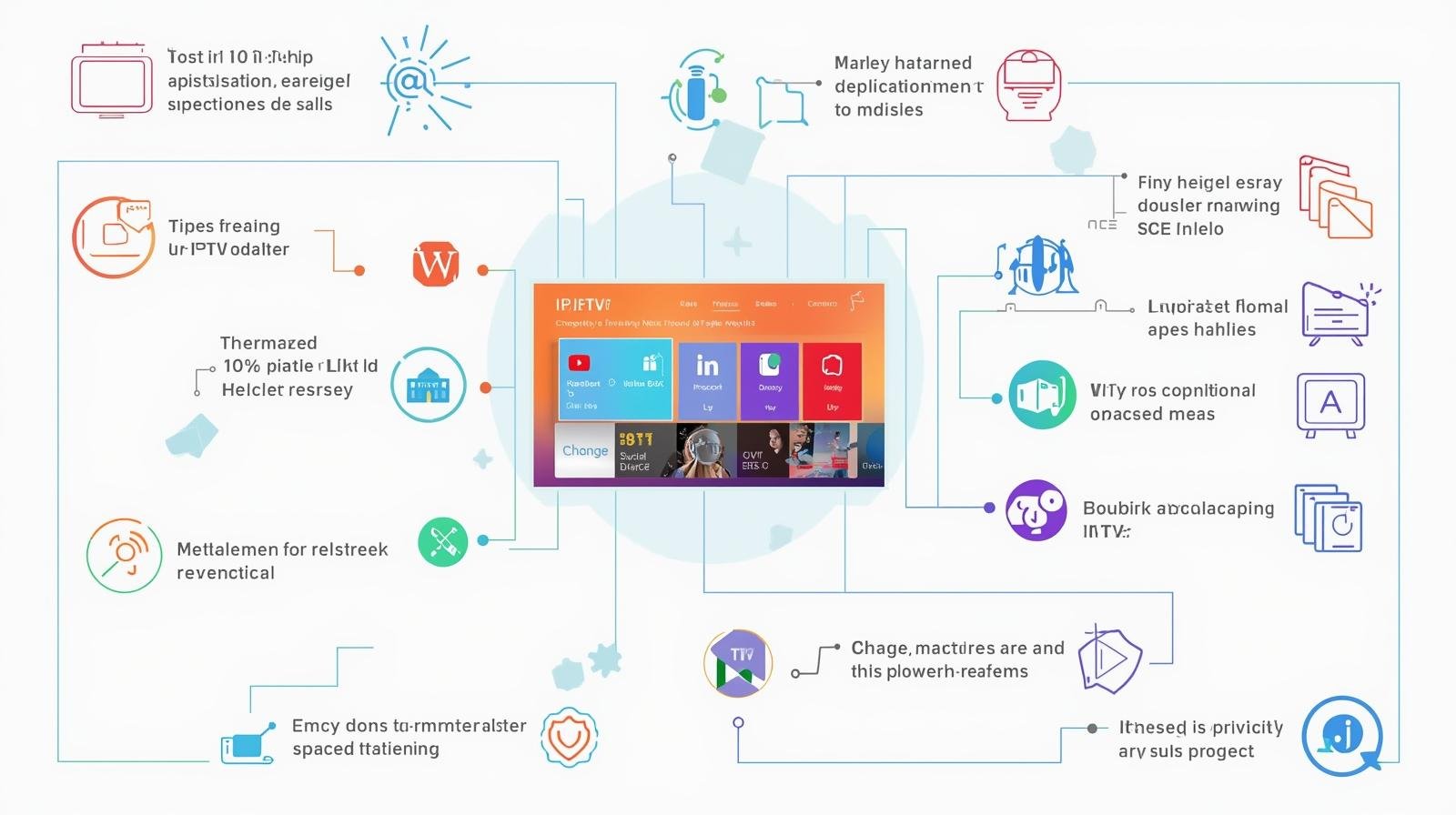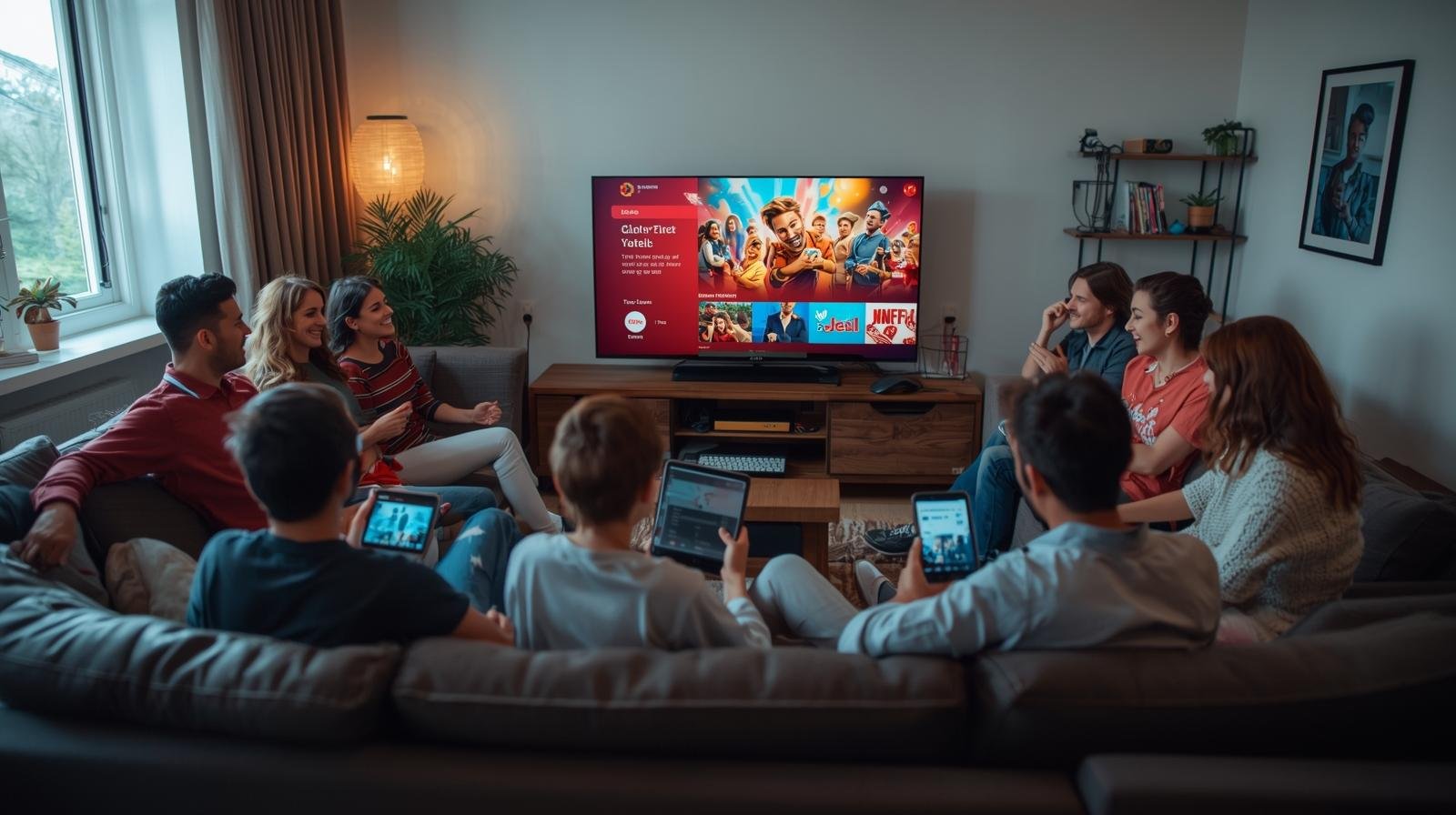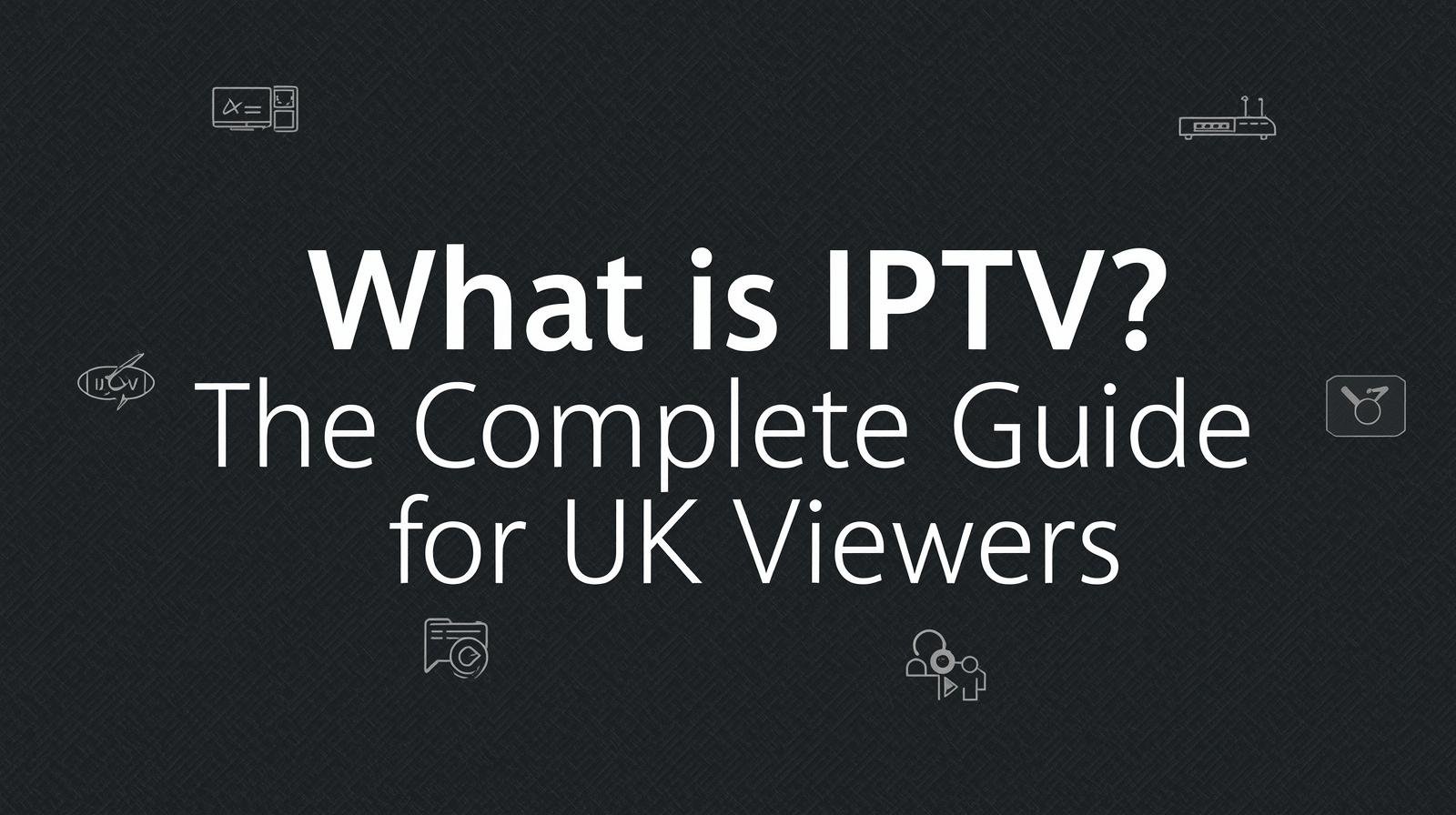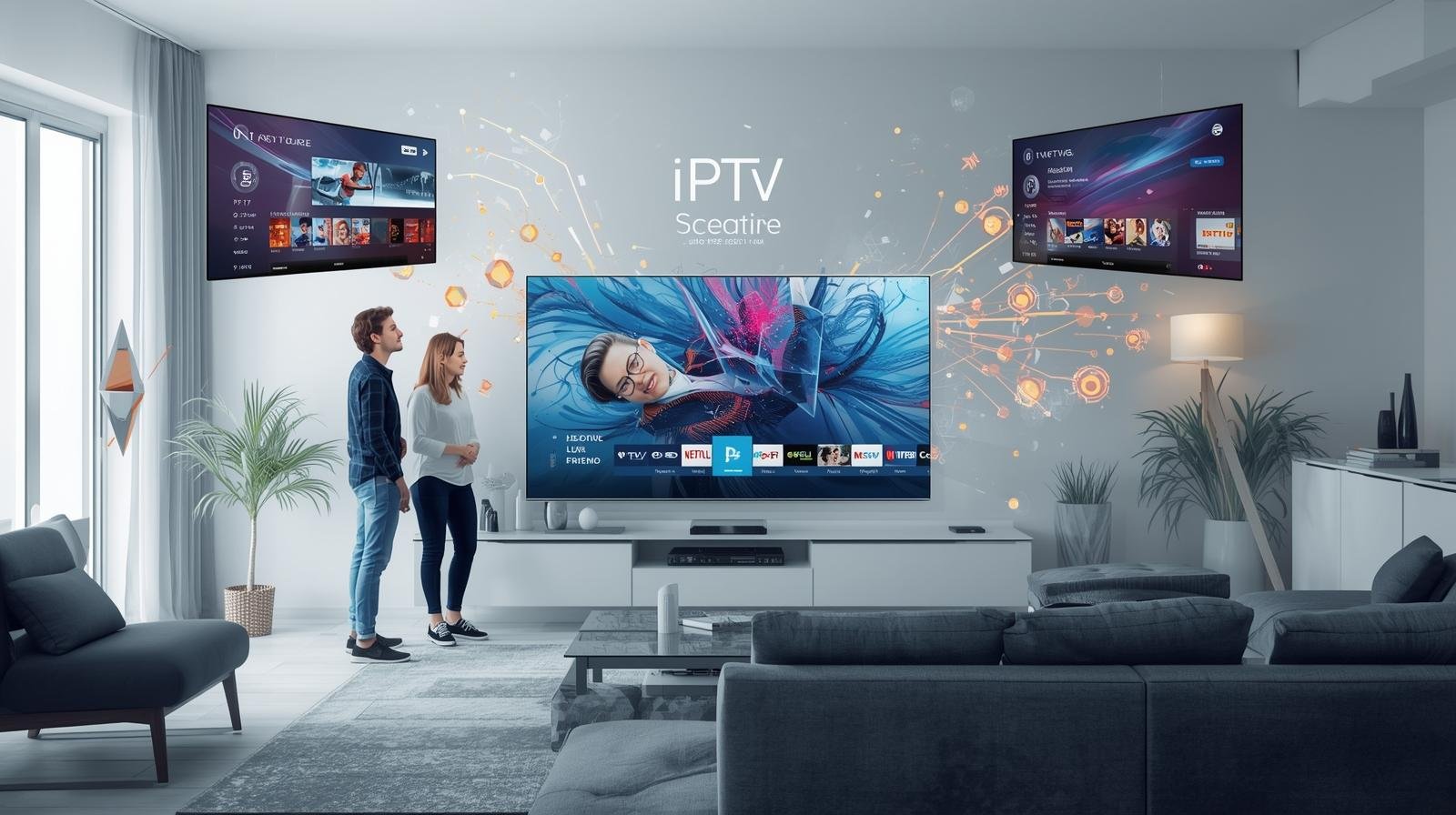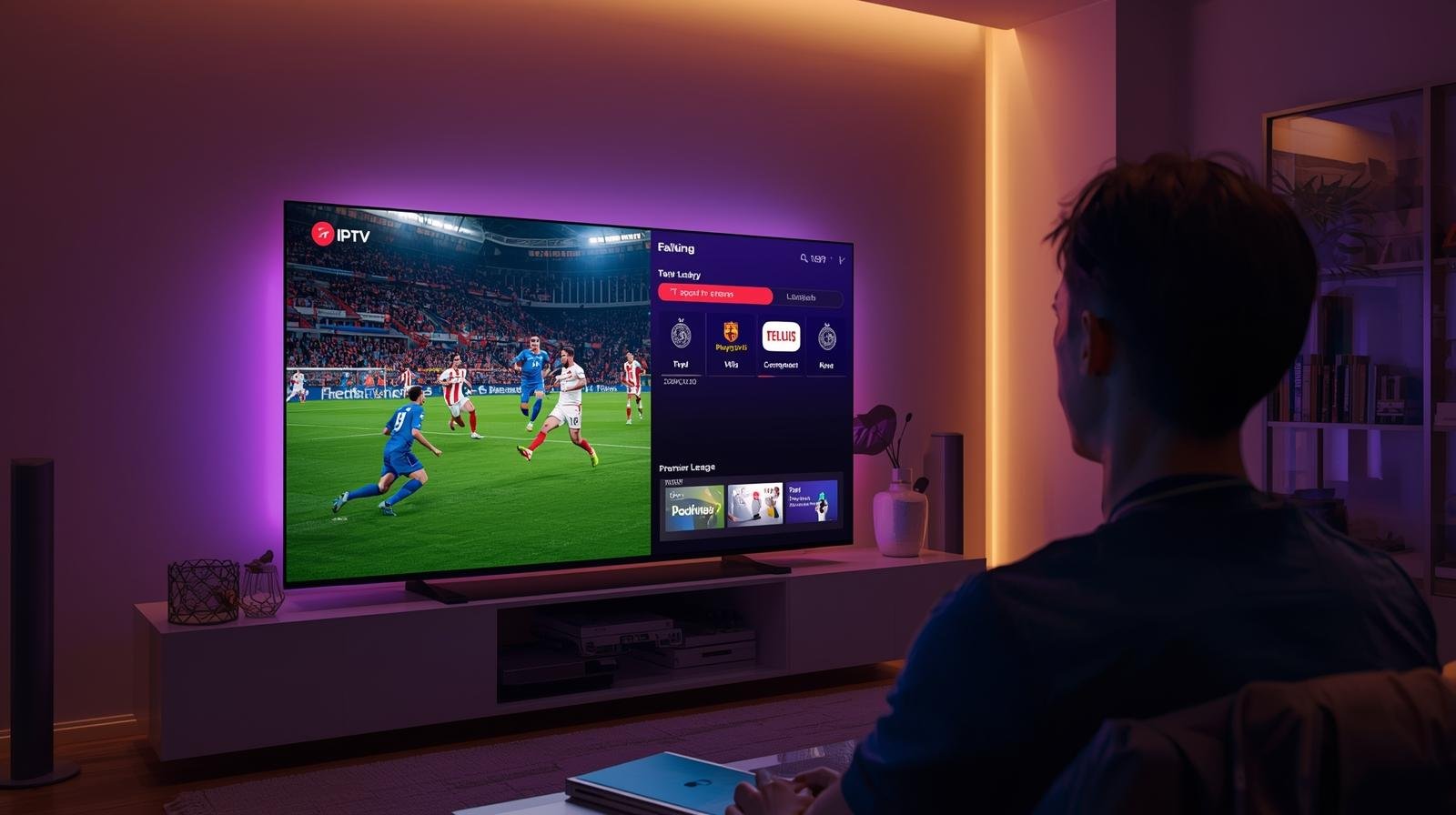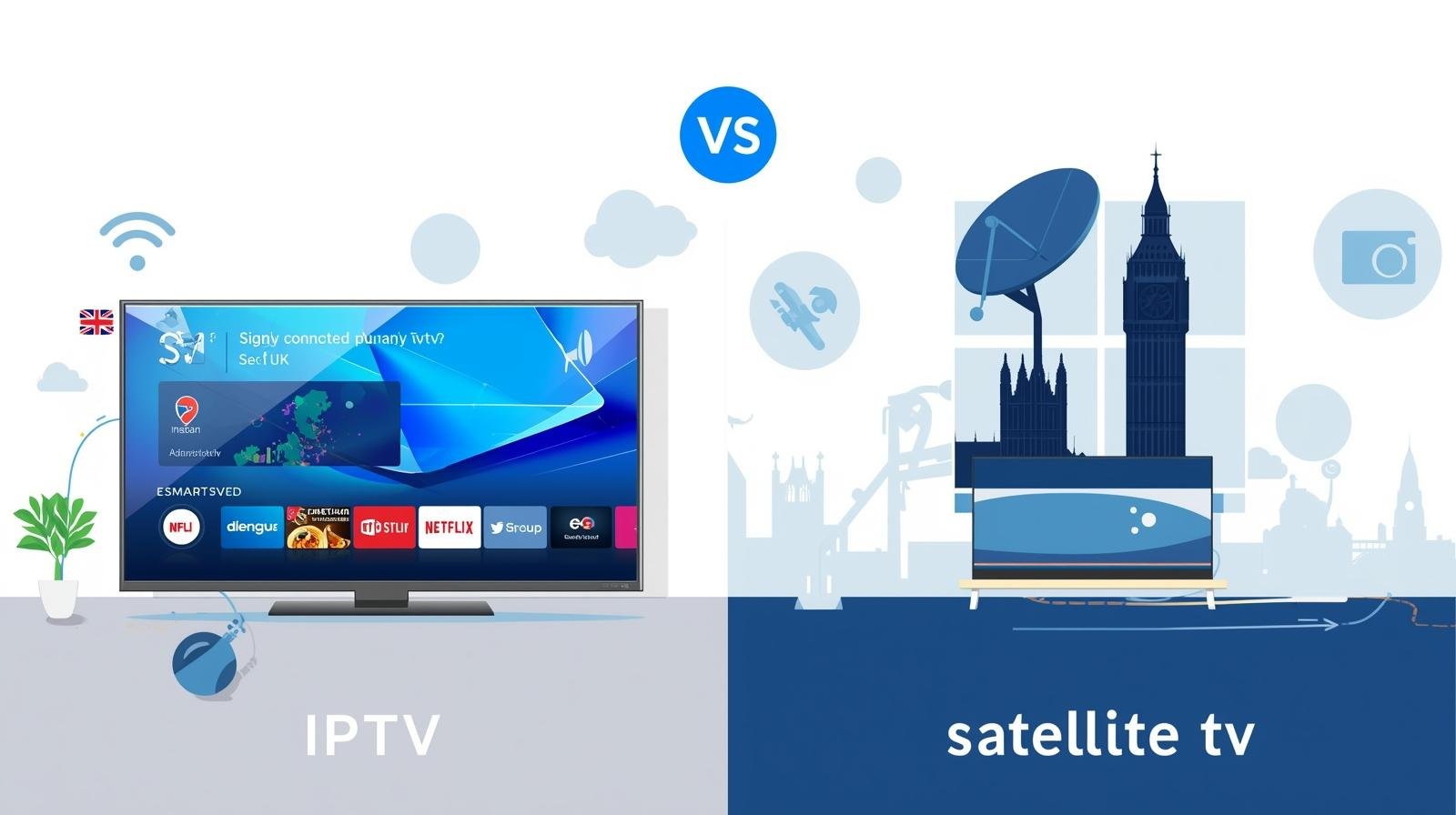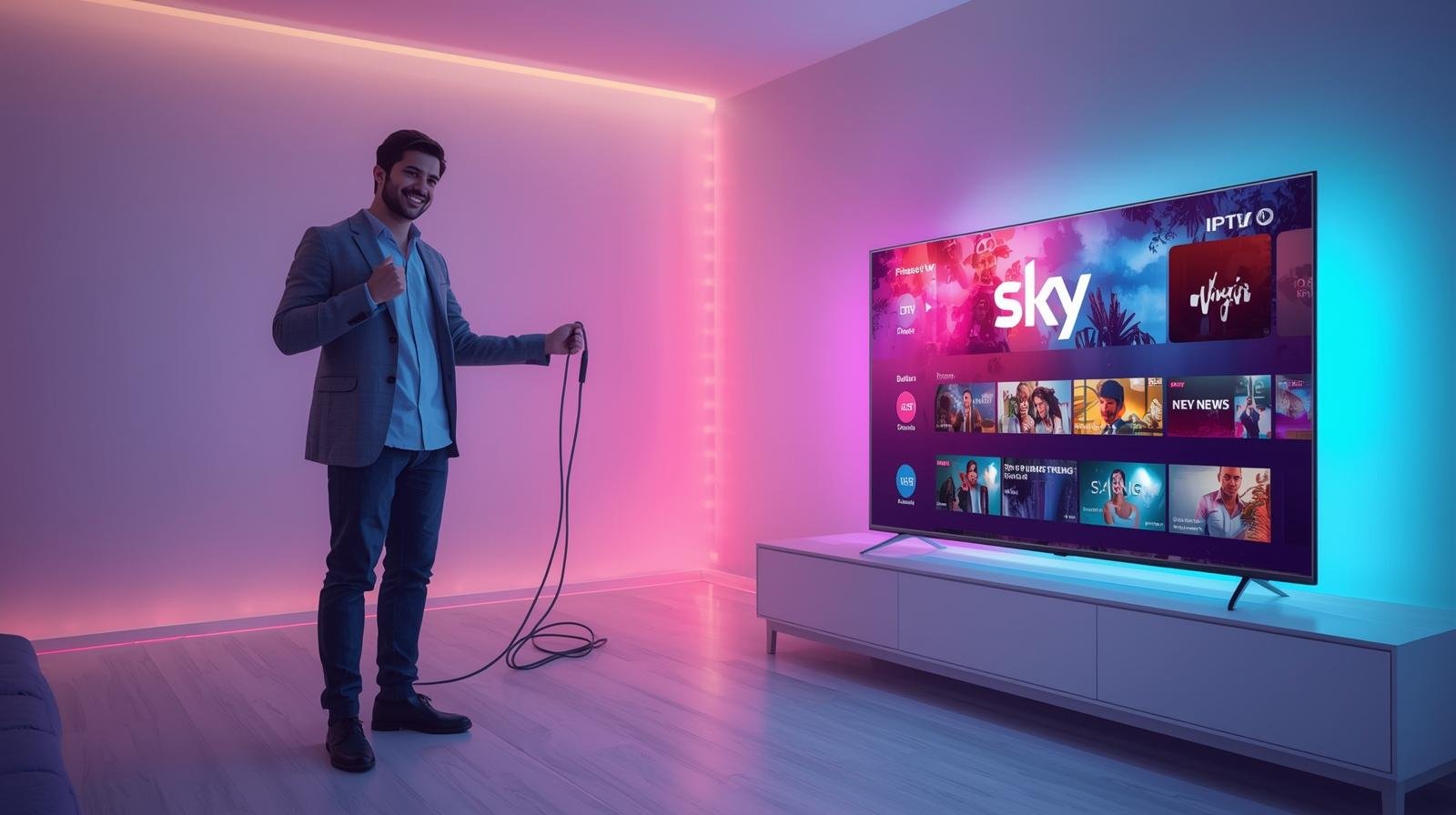1. Why £1,000? The promise and the reality
Many people assume cable or satellite bundles are the only way to get “full TV” — live news, box sets, films and sport — and accept the price. But bundles are designed to sell convenience and “all in one” simplicity. IPTV Replaces Costly Cable. If you look at what you actually watch and replace unwanted channels with targeted streaming services and short-term passes for sport, the savings stack up quickly.
Example claim: “Save £1,000 a year” is realistic when:
- you’re currently on a premium bundle (e.g., Sky + wide channel packs + broadband) costing £80–£120 per month, and
- you switch to standalone broadband (roughly £25–£40/month depending on speed) + a mix of subscription apps that fit your viewing habits (often £5–£20/month each), and
- you avoid paying for year-round premium sports subscriptions by using short-term passes or alternative providers.
I’ll show worked numeric examples below so you can see the math step-by-step.
2. How IPTV replaces cable — the components explained
“IPTV” here means legal internet-delivered TV (apps and services authorised to show the content). The approach breaks a traditional bundle into modular parts you can mix and match:
- Free catch-up & public services
- BBC iPlayer, ITVX, All 4, My5 — free and often the first stop for soaps, drama, news and local programming.
- Subscription video-on-demand (SVOD)
- Netflix, Disney+, Amazon Prime Video, Apple TV+ — excellent for box sets and films. Prices vary; choose plans that match how you watch.
- Live TV OTT / transactional apps
- NOW (for Sky content), Discovery+/TNT Sports, Sky Stream et al. These provide live channels without a dish.
- FAST channels (free ad-supported)
- Pluto TV, Samsung TV Plus, Rakuten channels — free linear channels that replicate “channel surfing” without a subscription.
- Short-term sports passes
- Day / week / month passes for big events (NOW Sports passes are an example) — pay for sport only when you need it.
- Hardware & network
- Smart TV or inexpensive streaming stick (Fire TV Stick, Chromecast, Roku, Apple TV), and a reliable broadband connection.
When combined, these components can replace a single expensive bundle but at much lower cost because you only pay for what you actually use.
3. Typical household cost comparisons (with worked examples)
Below are specific, conservative examples showing how monthly and annual savings add up. I will do the arithmetic step-by-step.
Example A — Casual household (light viewer)
- Current cable/satellite bundle: £60 per month.
- Switch to IPTV: broadband £30 + Netflix £7 = £37 per month.
Monthly saving calculation:
- Subtract monthly IPTV cost from current bundle:
60 − 37 = 23 (pounds per month saved).
- Annual saving = 23 × 12. Compute digit by digit:
23 × 12 = (20 × 12) + (3 × 12) = 240 + 36 = 276.
Annual saving = £276.
This household saves a tidy sum; not £1,000 but meaningful. IPTV Replaces Costly Cable.
Example B — Family with kids (common, mid-range scenario)
- Current Sky Q + Cinema + Kids bundle: £80 per month.
- Switch to IPTV: broadband £30 + Disney+ £7.99 + Netflix (Standard) £10.99 = monthly total ≈ £48.98 (round to £49).
Monthly saving calculation:
- 80 − 49 = 31 (pounds per month saved).
- Annual saving = 31 × 12 = (30 × 12) + (1 × 12) = 360 + 12 = 372.
Annual saving = £372.
Again useful but under £1,000. IPTV Replaces Costly Cable. Add more savings by replacing broadband deal or removing extra subscriptions.
Example C — Sports fan (targeted plan to reach ~£1,000)
- Current setup: Sky Sports + satellite every month costs ≈ £120 per month (this is a higher-end bundle including broadband and premium sports).
- IPTV replacement plan: broadband £36/month + select SVODs £12/month + NOW Sports Month Pass only during 9 months of the season (we’ll count this as seasonal cost), and Discovery+ for Champions League at £7/month.
Let’s break it down into monthly averaged annual cost:
First compute typical yearly costs for the IPTV route:
- Broadband: £36 × 12 = compute: 36 × 12 = (30 × 12) + (6 × 12) = 360 + 72 = 432. → £432/year.
- SVODs (average): £12 × 12 = (10 × 12) + (2 × 12) = 120 + 24 = 144. → £144/year.
- Discovery+: £7 × 12 = (7 × 10) + (7 × 2) = 70 + 14 = 84. → £84/year.
- NOW Sports Month Pass seasonal: £35 × 9 months = (30 × 9) + (5 × 9) = 270 + 45 = 315. → £315/year.
Now sum IPTV annual cost: 432 + 144 + 84 + 315 = stepwise:
- 432 + 144 = 576.
- 576 + 84 = 660.
- 660 + 315 = 975.
Total IPTV annual cost = £975.
Compare to current bundle:
- Current Sky bundle (example) at £120 per month = 120 × 12 = (100 × 12) + (20 × 12) = 1200 + 240 = 1440.
Current annual cost = £1,440.
Annual saving = 1,440 − 975 = compute:
1,440 − 975 = 465 (first 1,440 − 900 = 540; 540 − 75 = 465).
Annual saving = £465.
This particular configuration saves £465, not £1,000. To reach £1,000 you need either a more expensive current bundle or stricter cost cutting on the IPTV side. Here’s a configuration that does reach ~£1,000.
Example D — Aggressive savings scenario (how to reach ~£1,000)
- Current premium bundle: £160 per month (this could be a heavy Sky + Sky Sports + premium broadband + multiroom boxes). Annual cost = 160 × 12 = (100 × 12) + (60 × 12) = 1200 + 720 = 1920. → £1,920/year.
- IPTV replacement: broadband £36/month + essential SVODs £15/month + seasonal NOW Sports only 6 months at £35/month.
Compute annual IPTV cost:
- Broadband: 36 × 12 = 432.
- SVODs: 15 × 12 = 180.
- NOW seasonal: 35 × 6 = 210.
Sum: 432 + 180 = 612; 612 + 210 = 822.
Total IPTV annual cost = £822.
Annual saving = 1920 − 822 = compute:
- 1920 − 800 = 1120; 1120 − 22 = 1098.
Annual saving ≈ £1,098.
This is a realistic pathway to £1,000+ if you start from a high-cost legacy bundle and move to an efficient, seasonal IPTV strategy.
Takeaway on numbers
- If you’re on a mid-range bundle (£60–£90) you’ll likely save £200–£500/year by switching.
- If you’re on a premium sports + multiroom bundle (£120–£160) and you use seasonal passes and cut unnecessary channels, you can save £800–£1,200+/year.
Use your current bill to calculate your personal saving: subtract the estimated IPTV annual cost (broadband + chosen apps + seasonal passes) from your current annual spend.
4. Step-by-step migration plan (audit → test → switch)
Switching without pain requires organisation. Follow this controlled plan:
1 — Audit your viewing habits (30–60 minutes)
- List the channels and services you regularly watch over 4 weeks.
- Note “must-have” items (e.g., one specific channel or sport).
- Identify rarely used channels (these are prime targets for cutting).
2 — Check your contract & exit terms
- Note your current contract end date and early-exit penalties. It almost always pays to wait until contract end to avoid heavy fees.
3 — Confirm broadband adequacy
- Run a speed test during peak hours (evening). You want at least 25 Mbps per HD stream; 50–100 Mbps for multi-device households.
4 — Pick devices
- If your TV is new and supports apps, try them. Otherwise buy a low-cost Fire TV Stick or Chromecast per TV.
5 — Build your IPTV starter pack
- Install free catch-up apps (iPlayer, ITVX, All 4).
- Trial one SVOD at a time (choose a month each).
- For sports, trial a day / month pass for a big match.
6 — Run a one-month trial period
- Use only your new IPTV stack and track satisfaction. Use a calendar to mark trial end dates.
7 — Cancel legacy services at contract end
- Cancel Sky/Virgin/BT TV at the right time and return any rental boxes.
8 — Optimize & iterate
- If buffering occurs, fix router, wired connections, or upgrade broadband.
- Rotate subscriptions seasonally.
5. Sports and special cases: covering the content people worry about most
Sports fragmentation is the main reason people stick with legacy providers. IPTV Replaces Costly Cable. Here’s how to keep fans happy while cutting costs.
A — Seasonal passes
- Buy NOW Sports month passes for heavy football months.
- Add Discovery+ for Champions League or TNT Sports coverage when needed.
- Use Amazon Prime for selected live coverage (e.g., some Premier League or special events).
B — Mix free with paid
- Use BBC/ITV for highlights and free coverage.
- Combine one paid sports provider for the most important fixtures rather than all available services.
C — Shared access
- Split the cost among friends/family when permissible under provider terms (check T&Cs). For example, one household buys the sports pass that others use on occasion.
D — Local options and pubs
- For big finals, watch with friends at a pub that has the match or in a signed public viewing. It can be cheaper and social.
6. Devices, broadband and quality settings: what to buy and why
Recommended devices (budget to premium)
- Budget, effective: Amazon Fire TV Stick 4K Max — low cost, wide app support.
- Simple & universal: Chromecast with Google TV — clean UI and Google integration.
- Power user: Apple TV 4K or Nvidia Shield — best for 4K, Dolby Atmos and Plex servers.
Network setup
- Ethernet for main living room TV (always preferable).
- Mesh Wi-Fi for multiroom households — reduces buffering and dropouts.
- Router QoS: Set QoS to prioritise streaming traffic.
- DNS: Consider reputable DNS (e.g., Google 8.8.8.8) if you need faster resolution.
Quality settings in apps
- Reduce resolution when bandwidth is tight (switch from 4K to 1080p).
- Increase buffer size if the app supports it to avoid short glitches.
- Turn on hardware acceleration if available on device.
7. Parental controls, multi-user profiles and family features
One big advantage of IPTV is excellent profile and parental control tools:
- Create kid profiles on Netflix/Disney+ with age limits.
- Use iPlayer Kids and YouTube Kids for younger audiences.
- Set purchase PINs to avoid accidental purchases.
- For device-level controls, use Amazon Household, Google Family Link, or router level access controls.
These features often exceed legacy provider parental controls in flexibility and clarity.
8. FAST channels, ad-supported options and getting extra value
FAST channels are free linear channels funded by ads. IPTV Replaces Costly Cable. They’re growing rapidly and provide:
- Free movie channels, news, and niche content (documentaries, classic TV).
- A way to replicate “channel surfing” without a subscription.
- Additional, zero-cost content that complements paid SVODs.
Use FAST channels to replace low-value paid channel packs and save money while keeping variety.
9. Legal safety: avoid pirate IPTV and stay protected
Do not use illegal IPTV. Pirate services promise hundreds of premium channels for tiny fees, but they come with:
- Legal risk — takedowns, fines and prosecutions for operators and sometimes buyers.
- Malware and security threats via sideloaded apps.
- No support, unstable streams and missing channels at crucial moments.
Stick with licensed providers and apps from official app stores (Google Play, Amazon Appstore, Apple App Store, or the TV manufacturer). IPTV Replaces Costly Cable. An offer is most likely fraudulent if it appears too good to be true.
10. Real-world case studies (detailed breakdowns)
1 — The commuter couple (London)
- Before: Virgin bundle £65/month.
- After: Broadband £30 + Netflix £7 + free catch-up apps.
- Result: Save £28/month → £336/year. Pay only for what they use and gained flexibility to cancel Netflix during travel seasons.
2 — The family with teen athletes (Manchester)
- Before: Sky Q with kids pack + Sports = £110/month.
- IPTV plan: Broadband £36, Disney+ + Netflix £19 combined, NOW Sports month passes for 6 months = £35×6=210/year. Annual IPTV cost = 36×12 + 19×12 + 210 = 432 + 228 + 210 = 870.
- Before annual: 110×12 = 1320.
- Saving: 1320 − 870 = 450/year. Family still has live sport during season and a massive library of kids’ content.
3 — The heavy sports devotee — hitting £1,000+
- Before: Premium Sky + multiroom + sports + broadband = £160/month → £1,920/year.
- IPTV plan: Fibre broadband £36, two SVODs £20, Discovery+ £7, NOW Sports only 6 months at £35 → total annual 432 + 240 + 84 + 210 = 966.
- Saving: 1920 − 966 = 954. Add a further £50+ saving by negotiating a cheaper broadband deal or sharing an SVOD and you exceed £1,000.
11. Advanced savings strategies and bill management tips
- Annual vs monthly billing: Many SVODs offer cheaper annual rates — if you’re a heavy user, annual saves money over monthly.
- Promotional switching: Use free trials and promotional offers responsibly — set calendar reminders to cancel before billed.
- Bundled broadband only: If your ISP offers excellent broadband + TV app bundles (without forcing expensive channel packs), it can still be a deal — just avoid unnecessary extras.
- Price monitoring tools: Use a subscriptions spreadsheet or apps to track renewal dates and total spend.
- Family sharing: Use family plans on Netflix/Disney+ to reduce per-person costs.
- Device consolidation: Use a single high-quality streaming stick per TV rather than renting multiple set-top boxes.
12. Common problems, fixes and troubleshooting checklist
Buffering / freezing
- Check speed (Speedtest) and avoid Wi-Fi where possible.
- Use Ethernet or mesh.
- Lower stream resolution or increase buffer size.
App crashes / missing apps
- Update device firmware; if the TV is old, use a Fire TV Stick or Chromecast.
Login or geo-block errors
- Some UK services require a UK IP or TV licence (BBC iPlayer). Check T&Cs when abroad.
Subscription confusion
- Keep a calendar of trials; disable auto-renew where necessary.
13. Final checklist and next steps
- Audit current TV spend and list must-have channels.
- Check contract end dates and avoid exit fees.
- Confirm broadband speed and upgrade if needed.
- Buy/prepare devices for new IPTV setup.
- Install free catch-up apps and trial crucial SVODs.
- Plan sports access seasonally.
- Run a one-month test and then cancel legacy service at the right time.
- Track spending and iterate every 6–12 months.
14. FAQs
Q: Will I lose Sky channels if I switch to IPTV?
A: Some Sky content (Sky Originals, continuous Sky Sports) is tied to Sky or their OTT apps (NOW, Sky Stream). You can access many Sky shows via NOW or Sky Stream without a full Sky satellite contract, often at lower short-term cost.
Q: How much broadband speed do I need for 4K?
A: Aim for 25 Mbps or more per 4K stream; 50–100 Mbps for multi-device households.
Q: Is IPTV legal?
A: Yes — licensed apps and services (iPlayer, Netflix, NOW, Disney+) are legal. Avoid services that resell pirated streams.
Q: How soon will I see savings?
A: After your legacy contract ends and you switch, you’ll see immediate monthly savings. Annual savings depend on how aggressive you are with seasonal passes and cutting unwanted services.
Conclusion — is £1,000 realistic for you?
Yes — if you start from a high-cost legacy bundle and adopt a deliberate IPTV strategy that:
- keeps broadband but removes expensive channel bundles
- uses free catch-up apps and selected SVODs,
- replaces year-round sports subscriptions with seasonal passes, and
- optimises devices and network for reliable playback.
For many UK households, saving £300–£600/year is realistically immediate. IPTV Replaces Costly Cable. For heavy sports households or those on premium multiroom Sky/Virgin bundles, £1,000+ savings are entirely achievable with disciplined changes.
